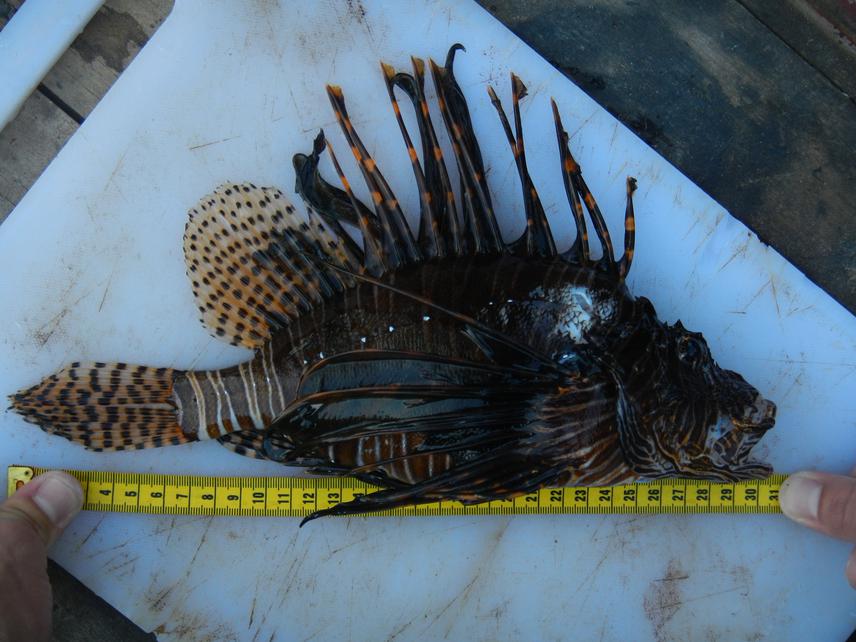Laís de Carvalho Teixeira Chaves
This project intends to:
1) measure how much time (days, weeks or months) do
lionfish take to recolonize a reef after removal efforts 3
2) Design a cost-effective lionfish removal program, to be implemented by local stakeholders.

My organisation has been conducting a Lionfish monitoring program since 2010 in the Bocas del Toro Archipelago, Panama, which was invaded by lionfish in 2009. Lionfish removal tournaments have been conducted twice a year but due to lack of funds and commitment these events ceased 2 years ago. Lionfish culling is now randomly being done by locals and dive shops.
Modelling studies have suggested that the exploitation rates necessary to cause considerable reductions in lionfish population are high (e.g., 27–65% per annum), and once removals stop, lionfish populations recover quickly. Preliminary results from Bocas suggest that at least at one reef site, lionfish densities have been reduced by occasional removals (e.g. Punta Caracol reef).
It is becoming clear that the management of the lionfish invasion must be a long-term initiative and, given the intensity of effort required, it is likely to be possible only at small spatial scales. The optimal design of removal efforts (i.e., how often to cull, how many fish to remove) remains unclear and depends on lionfish population numbers. By scientifically addressing this question, this project aims to establish a sustainable management plan for lionfish in the Bocas del Toro Archipelago by building partnership with local stakeholders and using community outreach approaches.